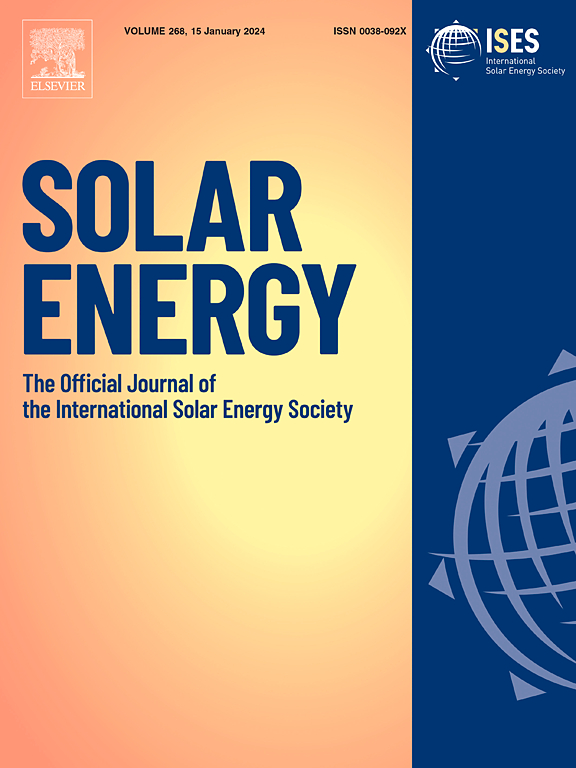Performance enhancement of flat plate cooking unit using novel hook turbulators for indirect solar cooking applications: Numerical and experimental assessment with enviroeconomic analyses
IF 6
2区 工程技术
Q2 ENERGY & FUELS
引用次数: 0
Abstract
Emphasized design modification in cooking units enhanced the performance of solar cooking systems immensely. Motivated by the designs in the literature, an attempt has been made to enhance the performance of a solar-based flat plate cooking unit (FPCU) by incorporating novel hook turbulators. Initially, the thermal behavior of the designed FPCU with and without turbulators was numerically studied using computational fluid dynamics (CFD) analysis. Further, the numerical results were validated by conducting an experimental investigation on the preparation of dosa (Indian rice pancakes). From the CFD results, it was identified that the turbulator inclusion induced uniform temperature distribution and increased core flow velocity, which enhanced the total heat transfer rate by 6.5 % with the penalty of ∼1.64 % increased pressure drop. The experimental results identified that the turbulator inclusion reduced cooking duration by ∼14 % and improved the heat transfer rate, cooking unit and overall system efficiencies by 6.2 %, 2.16 % and 1.55 % respectively, compared to without turbulator configuration. On validation, the numerical and experimental results of FPCU with and without turbulators aligned well with a maximum deviation of ∼6 % for the cooking portion heat transfer coefficient of 100 Wm−2K−1. The economic analysis reveals that compared to without turbulator FPCU, the levelized cost of cooking a meal (LCCM) (0.127 $/meal) and levelized cost of cooking energy (LCOE) (0.326 $/kWh) of turbulator-assisted FPCU were reduced by 13.38 % and 5.8 % respectively. The environmental analysis shows that the turbulator-integrated FPCU can mitigate 503.22 kg and 420.17 kg of CO2/year compared to LPG and electric stoves respectively.
求助全文
约1分钟内获得全文
求助全文
来源期刊

Solar Energy
工程技术-能源与燃料
CiteScore
13.90
自引率
9.00%
发文量
0
审稿时长
47 days
期刊介绍:
Solar Energy welcomes manuscripts presenting information not previously published in journals on any aspect of solar energy research, development, application, measurement or policy. The term "solar energy" in this context includes the indirect uses such as wind energy and biomass
 求助内容:
求助内容: 应助结果提醒方式:
应助结果提醒方式:


